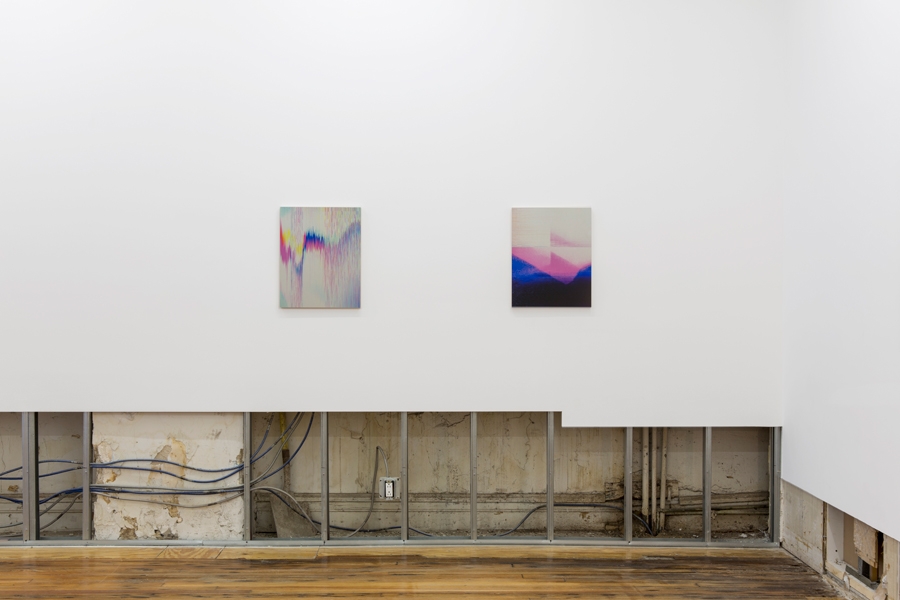There’s something a little schizophrenic about James Hoff’s Skywiper, which looks like a feelgood painting show but is actually a big, fat middle finger to the medium. With a cuntiness that makes me clap my hands and wiggle my hips, Hoff declared, in a recent BOMB interview, that abstract painting was a ‘kind of culturebound illness’. Thus, in Skywiper, he ruthlessly subjects the genre to common computer viruses – either Skywiper or Stuxnet, both of which have infected computer systems in Iran. Hoff’s infected digital images of blank, monochrome canvases and aluminium surfaces turn chirpily fucked up, with striated lines and tiny pixels of red, yellow and blue forming striped, wavy and repetitive patterns, like radio waves would look if pinned down to a surface and rendered in brilliant Technicolor. Hoff transfers these corrupted images onto aluminium plates using a dye sublimation process, and then attaches them to wood substrates and hangs them like paintings. They’re impostors, though, more like painting undone than painting created, and in their generic pleasantness, they point to painting as a disposable pop idiom rather than a relevant form of artistic expression.
What makes Skywiper such an interesting success – or failure – is how patronising Hoff is towards the medium and yet how he ultimately propagates it tenfold with examples that are almost joyfully decorative, like bite-size pocket paintings that would complement any piece of furniture. Stuxnet No. 7 (all works 2014) looks as if a long line of colour had been applied across the width of its surface, only to be combed up and down with something fine-toothed. Skywiper No. 1 resembles a zoomed-in still of grainy TV footage; a deep blue pool of colour suggests some sort of vague, alien landscape, with the atmosphere above interrupted by thin horizontal lines, like surveillance footage breaking down into unintelligibility. Skywiper No. 12 seems to feature the same landscape, albeit refracted into repeating quadrants, while Skywiper No. 2 is just a hot mess of thin coloured stripes. There’s something vaguely Wade Guyton-y about these works, in that the image’s technological breakdown, or failure, is so important. Though here that failure is embedded in the coded guts as opposed to the printing apparatus.
Literalising the somewhat implied violence of the two-dimensional works, Hoff also infected a jpeg of Callicoon’s gallery wall and then removed whole sections of the actual Sheetrock based on the compromised image. The paintings then hover somewhat comically over wide, jagged sections of removed wall that span the entire length of the gallery. With only studs remaining and wires spilling out along the floor like entrails (and in one section, an old misplaced shovel from some earlier construction), the installation is a welcome act of institutional aggression, though only to a point; Hoff ultimately bows to his gallery trappings such that he’s having his cake and seemingly eating it too.
This article was first published in the January & February 2015 issue.
